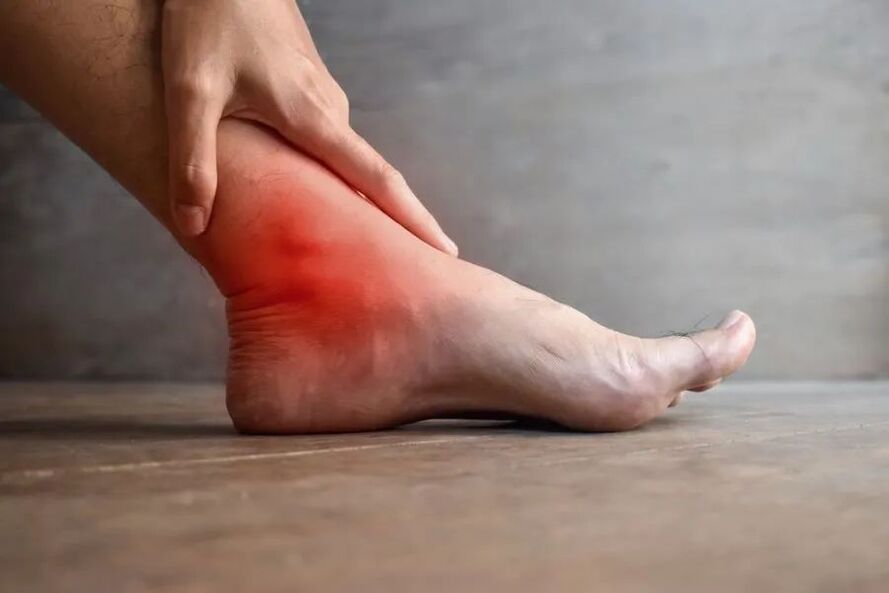
Arthrosis of the ankle joint is a degenerative, dystrophic disease of the structures of the musculoskeletal system. It affects the lower limb. It is considered one of the most common forms of arthrosis: it accounts for 30% of the total number of degenerative-dystrophic joint damage. The pathological process occurs not only in older patients. About a quarter of patients are under the age of 40.
The disorder is associated with persistent pain and progressive loss of joint and lower limb function. It progresses without treatment and does not go away on its own. The diagnosis and treatment of the disorder is the task of an orthopedic doctor (depending on the cause, a traumatologist, as well as physical therapy doctors and physiotherapists are involved).
Causes of ankle arthrosis
Osteoarthritis is considered a polyetiological disease. Its formation occurs as a result of the influence of a group of causes. As age progresses, the number of factors that cause the disease increases, so the probability of pathological processes increases. But not everything is so simple.
Pathogenesis of the disorder
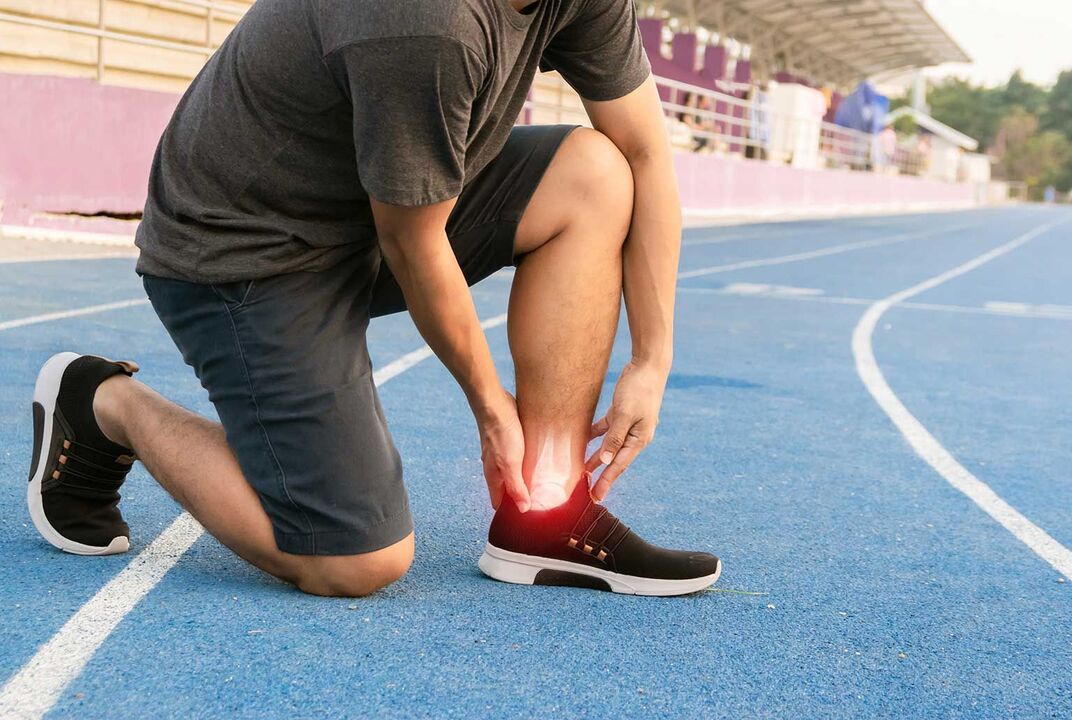
There is a group of arthrosis of the ankle, the most common of which are:
- irrational physical activity;
- injuries;
- activities;
- metabolic diseases;
- uncomfortable shoes;
- other diseases of the locomotor system;
- rheumatic diseases.
Irrational stress can be a consequence of lifestyle or career choice. Constant walking, standing still, carrying heavy objects, intense activity. All of these are provocateurs of the pathological process in the medium term (several years).
Another cause is injuries, especially intra-articular fractures, dislocations, and severe contusions (to a lesser extent). Arthrosis of the ankle joint occurs imperceptibly, but progresses continuously. Patients often underestimate the consequences of the trauma they have suffered.
Surgeries can provoke arthrosis. However, such complications are relatively rare. Mainly due to incorrect assessment of the clinical situation. inadequate qualification of the doctor.
Metabolic pathologies, such as diabetes mellitus, can cause a disorder. However, much more often the cause of arthrosis of the ankle is gout, as well as hormonal disorders (for example, during menopause).
Uncomfortable shoes are one of the key factors in the development of the pathological process. The disorder develops due to the incorrect distribution of the load on the foot. Usually, complex disorders develop: not only arthrosis, but also spinal injuries. At least - osteochondrosis. But more dangerous problems can occur.
Dysfunctions of the locomotor system themselves also increase the likelihood of the pathological process. Intervertebral hernias, osteochondrosis, and congenital anomalies are additional risks.
Rheumatic diseases are represented by arthritis and systemic lupus erythematosus. Degenerative-dystrophic changes are secondary, but they aggravate the underlying disease and worsen the prognosis.
Arthrosis of the ankle joint is a multifactorial disease. It usually develops due to several reasons at the same time. There are exceptions, but they are rare. In addition, the number of factors affects the severity of the disease and the speed of the progression of the pathological process.
The development of the pathological process is gradual. In the initial stage, local blood circulation and the distribution of dynamic load on the leg are interrupted. Gradually, destructive processes appear in the cartilage. A slow inflammation begins. Degeneration of other ankle structures occurs: capsule, ligaments, bones, etc. The more advanced the disease, the more difficult the treatment. It requires more effort and time.
Factors causing an increased risk of developing arthrosis
Dystrophic destruction of the tissues of the ankle joint occurs not only as a result of immediate causes. Risk factors influence the severity, probability and course of the disease. They complete the picture of the violation. Among them:
- the habit of wearing heels;
- the physically demanding nature of the work (including professions with obvious risks: teachers, cooks also get sick);
- previous injuries to the ankle joint (there are cases when the disorder appeared years after the injury);
- a history of endocrine diseases (hormonal disorders pose additional risks);
- history of musculoskeletal diseases;
- age 40+ (although the disease also occurs in younger people);
- increased body weight;
- no (women suffer more often than men).
Arthrosis of the ankle joint is a slowly developing disease, the symptoms do not appear immediately. Therefore, it is difficult to assess what risk factors and causes provoke the pathological process. It is necessary to collect a complete medical history.
Classification and types of damage to the ankle joint
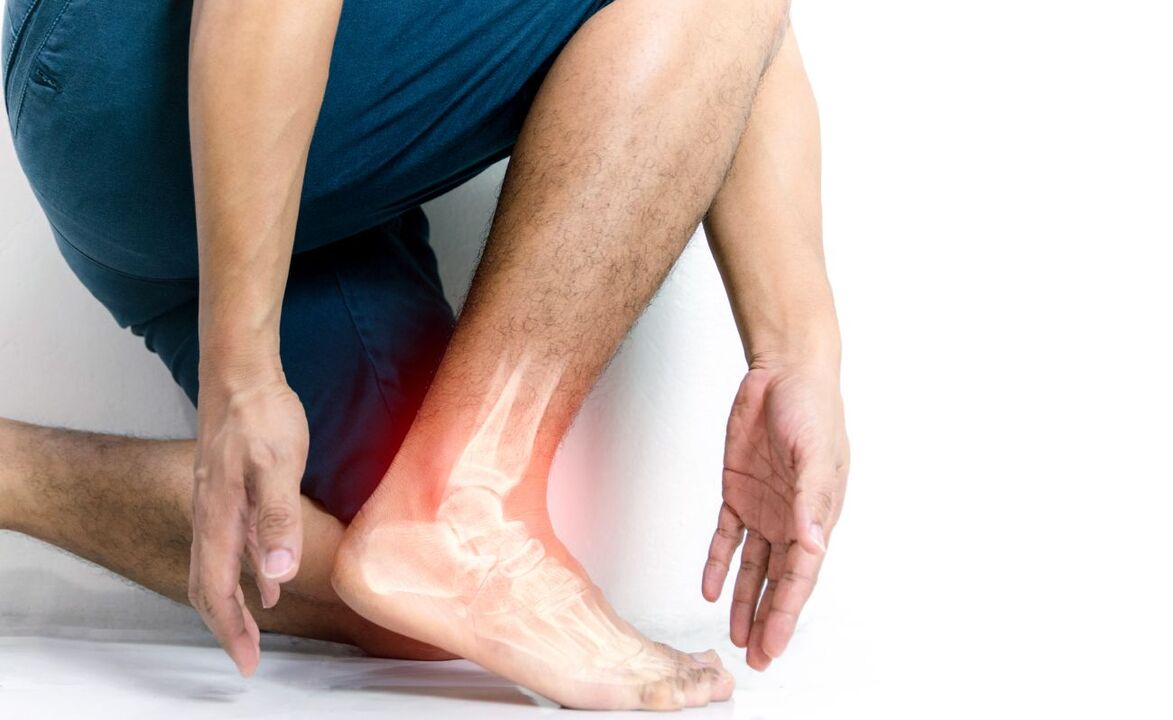
Pathology is classified according to two bases.
The first criterion is the origin of the pathological process. Highlights:
- the post-traumatic form of the disorder (it develops after injuries to the ankle joint or other structures of the musculoskeletal system);
- deforming arthrosis of the ankle joint: the result of metabolic disorders or injuries, along with slow but permanent deformation of the joint;
- Metabolic arthrosis develops against the background of diabetes, hormonal disorders or gout (purine metabolism disorders).
The second basis for classification is based on the stage of the pathological process. During its development, arthrosis of the ankle joint goes through the following stages:
- initial or early;
- advanced;
- advanced arthrosis.
In the first stage, there is no clinical picture in itself, or it appears after intense physical activity. The pathological process is detected only with the help of special diagnostic methods.
The progressive stage of the disorder is accompanied by an increase in clinical symptoms. Symptoms appear after light physical activity. Load tolerance decreases. There is a constant pain syndrome and limited mobility of the leg in the ankle joint.
The last stage of the pathological process is accompanied by severe pain and other symptoms in complete rest. Both supporting and motor functions are impaired. A person often becomes disabled. Complex surgical treatment is required, including endoprostheses.
Important!
Determining the stage plays the biggest role in determining treatment tactics and predicting the course and outcome of the disease. The disorder is best treated in its early stages. The more advanced the pathology, the more difficult and time-consuming the correction.
Symptoms of the disorder
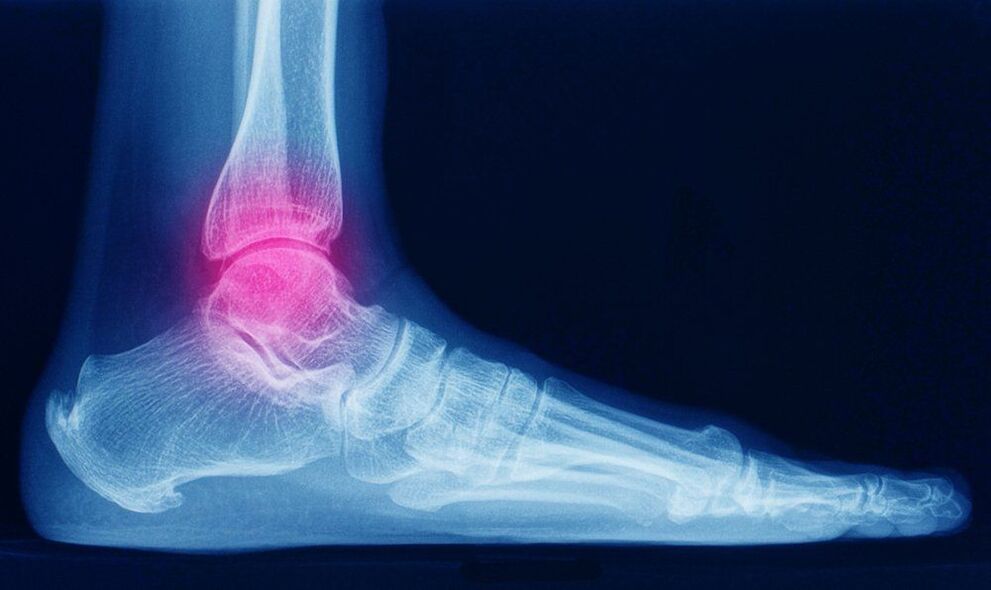
The clinical picture depends on the form and stage of the pathological process. Typical manifestations are:
- pain;
- fatigue;
- exercise intolerance;
- swelling;
- disorders of the supporting function of the leg;
- muscle weakness.
Leg pain is initially observed only after intense physical activity. Then a little activity is enough. In the advanced stage of the pathological process, pain is always present, regardless of the load.
Fatigue can be observed from the very first stage of the disorder. Muscle weakness and a feeling of increased fatigue progress along with the disease. The signs point to further development of the disorder.
Exercise tolerance also gradually decreases. In the pronounced stage of the disorder, a person cannot rise to the second or third floor. We have to stop.
Swelling is a sign that is always present. The leg at the ankle appears swollen and enlarged. This is a non-specific manifestation.
Initial pain is typical. Severe joint stiffness develops after staying in one place for a long time. The first moves cause a lot of discomfort. The pain and discomfort gradually subsides as the person continues to move.
The clinical picture depends on the degree of arthrosis of the ankle joint. It plays a major role in determining the stage and severity of the pathological process. The doctor organizes the symptoms through oral questioning and taking an anamnesis.
The disease is characterized by a chronic course. During the period of exacerbation, the signs of arthrosis of the ankle joint appear most clearly. In the chronic phase, remission is only partial. The clinic is not so bright, but the symptoms do not disappear completely. Then a new exacerbation of arthrosis of the ankle joint occurs, the manifestations become intense again. And so on in a round until quality treatment is done.
Complications of arthrosis of the ankle
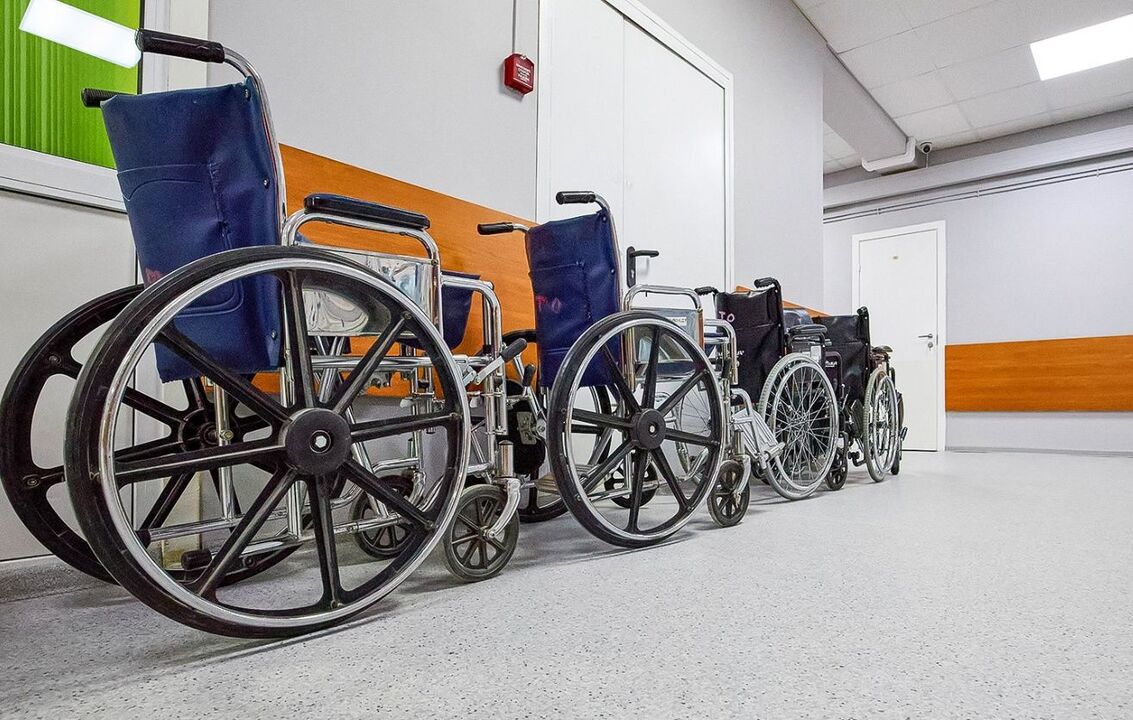
The complications of the pathological process are related to the preservation of the ability to work and the ability to take care of oneself.
Patients experience ankle deformity. The pathological process ends with the formation of contractures, areas of primary or complete immobility of the limb in the ankle. The situation can only be corrected surgically.
At the time of exacerbation, the development of synovitis and inflammation of the joint bursa is typical. This condition lasts for several weeks and, during its acute course, completely eliminates the ability to work and move.
The end result of the pathological process is the reduction and complete loss of the supporting function of the leg, and the person cannot move normally. Crutches must be used. The ability to work and, in some cases, the ability to take care of oneself is completely lost. In advanced stages of ankle arthrosis, patients become disabled.
Diagnosis of the disease
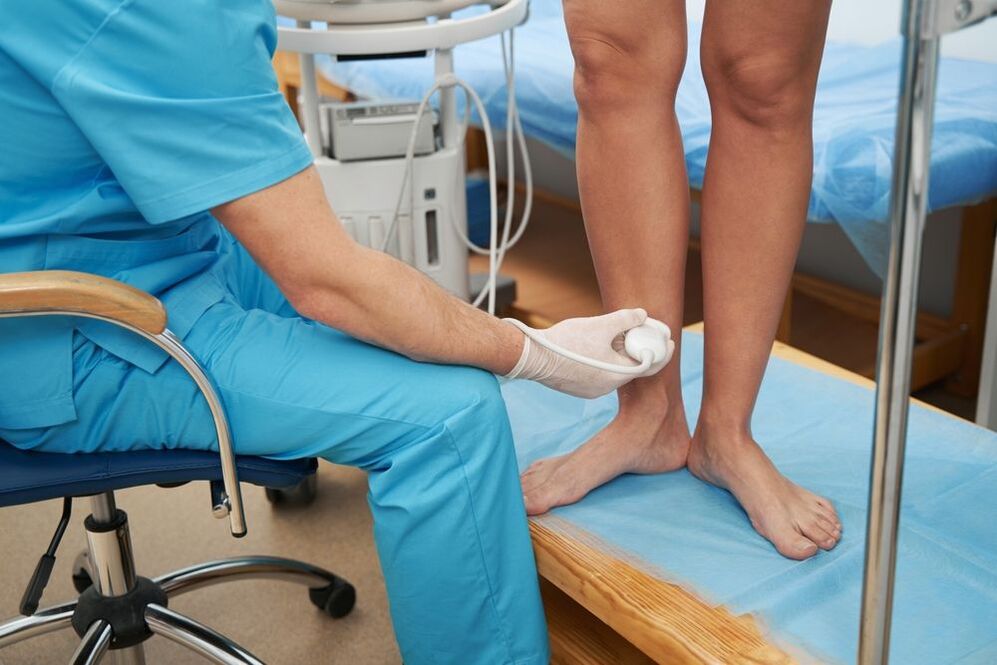
The diagnosis of damage to joint structures and cartilage tissue is carried out under the supervision of an orthopedic traumatologist. The tests are typical. It is not difficult to identify the pathological process, as well as its severity. Among the techniques:
- verbally questioning the patient to better understand the nature of symptoms and health complaints;
- collection of anamnesis, which makes it possible to determine the likely origin of the pathological condition;
- palpation: arthrosis is indicated by deformation, swelling, pain during passive movements;
- Ankle radiography: a routine test that provides enough information to make a diagnosis and determine its severity, is considered the gold standard test;
- MRI if radiographic data are insufficient.
Other tests may be performed. For example, computed tomography (arthrosis affects not only the cartilage, but also the bones; CT enables detailed, accurate visualization of the nature of the abnormalities).
Note!
Arthrosis has no specific manifestations, especially in its early stages. Therefore, it will not be possible to distinguish between pathological processes independently, without sufficient knowledge. Special instrumental diagnostics is required.
Laboratory diagnostic techniques provide little data. They are only informative in terms of identifying the inflammatory process and help in the diagnosis of some forms of arthrosis (metabolic, rheumatic).
Treatment methods
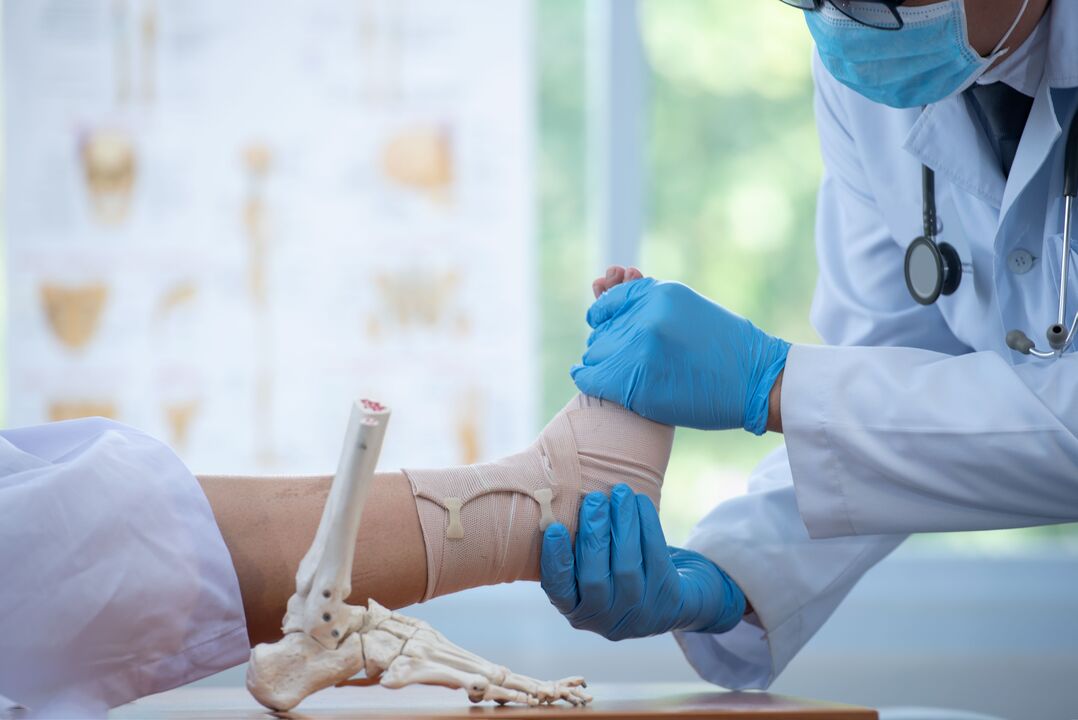
Treatment of arthrosis of the ankle joint is carried out using conservative and surgical techniques. You can achieve the best results if you resort to complex correction.
Conservative therapy includes the use of drugs, exercise and physiotherapy with massage. The following drugs are used:
- local anti-inflammatory;
- general anti-inflammatory drugs (in the form of tablets or injection solutions);
- chondroprotectors;
- Nicotinic acid and other tools to improve metabolic processes.
Gypsy therapy and physiotherapy, together with the massage, are aimed at healing after the acute state. These methods are significant during the remission period. If the disease occurs in an acute form, with pronounced clinical symptoms, the methods are postponed.
Surgery is required for deformities and long -term differences in the anatomy of the joint. Joint plastic or endoprothesis, joint replacement with artificial analog. This is a high-tech correction method.
Predictions
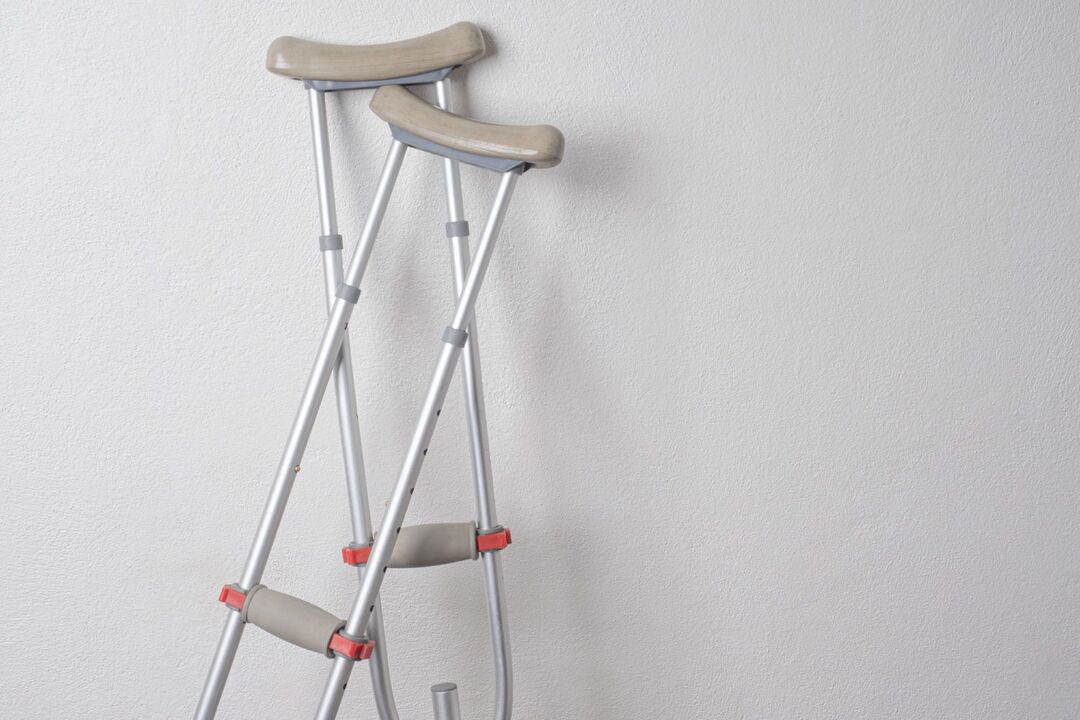
The prognosis depends on the moment of treatment, the state of health, the cause of arthrosis, and the degree of development of the disorder. The more advanced the disease, the more complex the situation is. If the treatment begins early, the outlook for healing and complete healing is good. In other cases, surgery and a long rehabilitation period are required.
Prevention of the disorder

Prevention of ankle arthrosis includes:
- wearing comfortable shoes;
- timely treatment of musculoskeletal disorders;
- reasonable control of welfare;
- body weight control;
- avoiding injuries;
- load control.
Prevention can reduce the risk of ankle arthrosis by 2-3 times. The likelihood of the pathological process will be minimal.













































